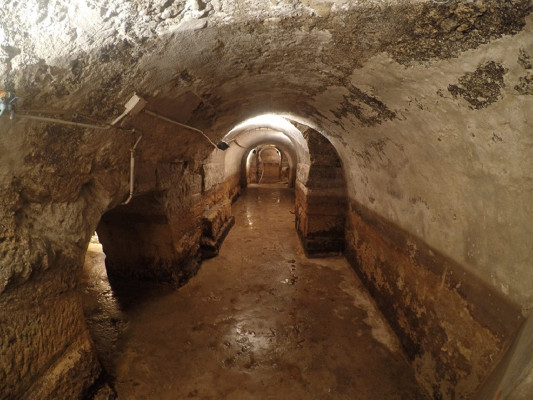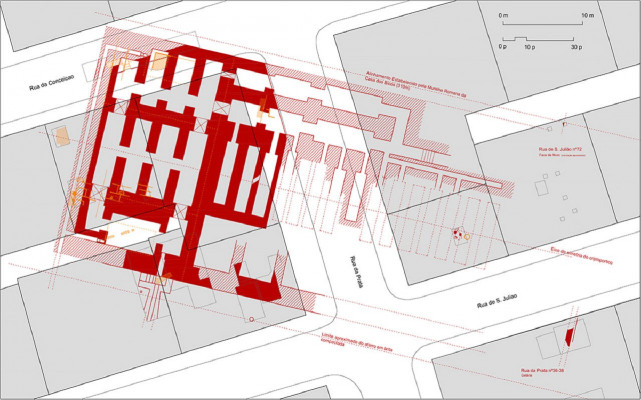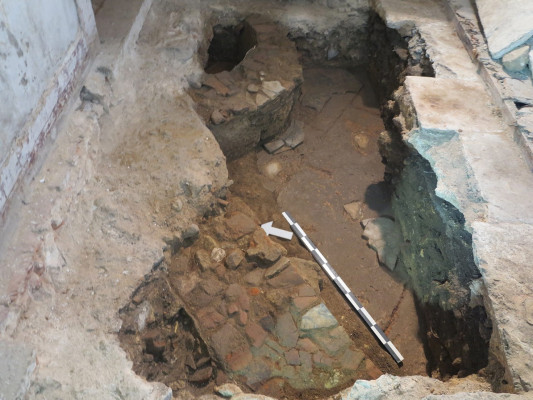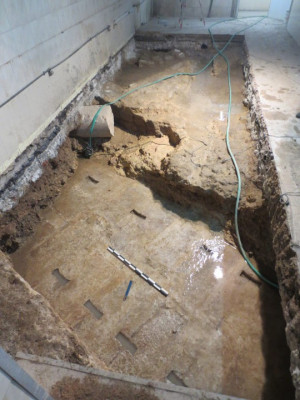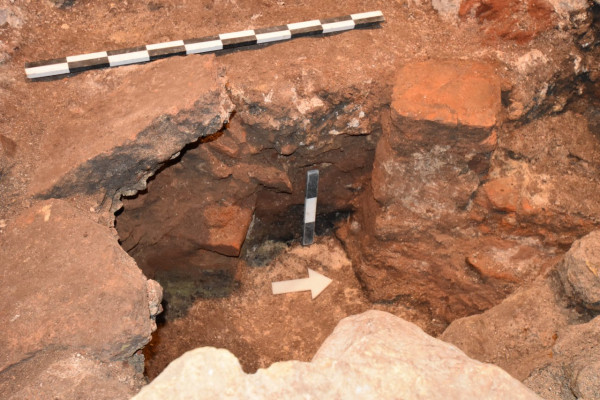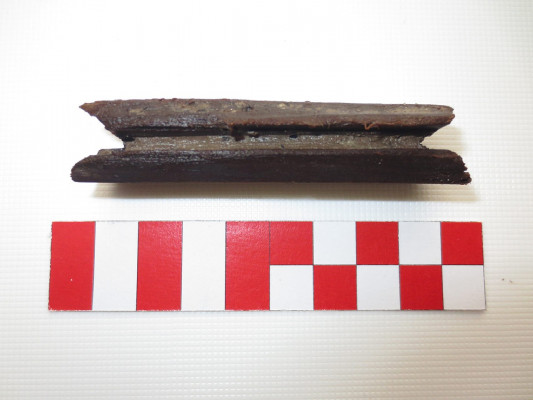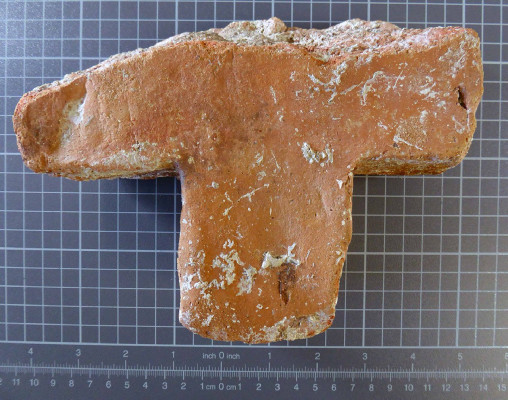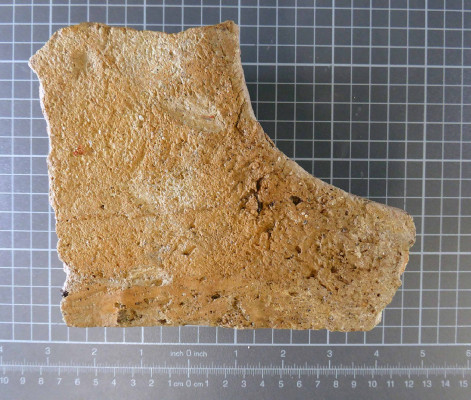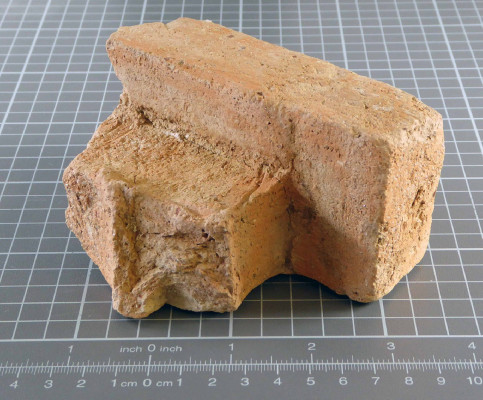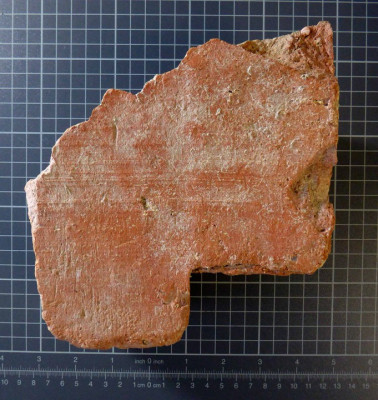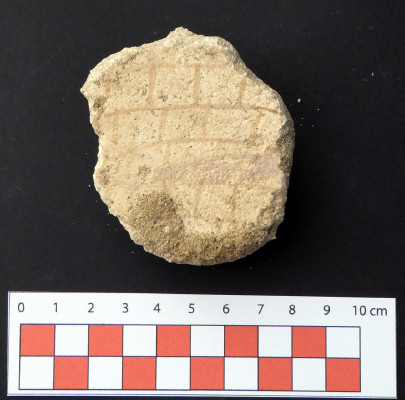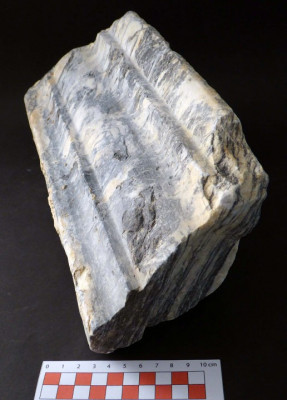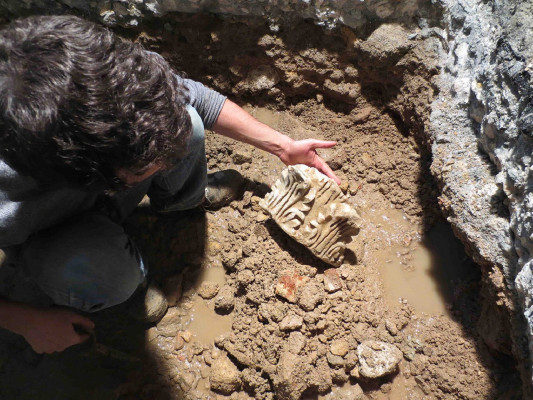Choose locations to explore
Select the desired period of history
1st - 4th / 5th century AD
Cryptoporticus of the port baths
A cryptoporticus (stone domed structure) that - considering the remains found on location, the architectural characteristics and the techniques and materials used - served to support the baths. Discoveries include architectural elements, moulded and painted plaster, wooden and glass trays, ceramic tiles, in addition to common and fine ware and amphora, from the High Imperial Roman Period and Late Antiquity. Archaeological research concluded that water infiltrated the subterranean galleries shortly after its construction in the 1st century AD, through a still visible crack.
The structure was discovered inundated by water, during the pombaline reconstruction following the earthquake of 1755. During the 18th and 19th centuries, surveys and descriptions led to different historic interpretations, but only in the late 20th century did archaeological interventions begin, in particular with the Project to Study and Value the Roman Cryptoporticus of Lisbon (a municipal plurennial archaeological research program).
The structure was discovered inundated by water, during the pombaline reconstruction following the earthquake of 1755. During the 18th and 19th centuries, surveys and descriptions led to different historic interpretations, but only in the late 20th century did archaeological interventions begin, in particular with the Project to Study and Value the Roman Cryptoporticus of Lisbon (a municipal plurennial archaeological research program).
Add to route
3D-Model with reconstitution of cryptoporticus and building that lay above it.
Typology
Cryptoporticus, Baths, Epigraphs, City | Urbs
Archeological interventions
1995-1996; 2015; 2015-2016; 2018; 2019; 2020
Suggested reading
Caessa, A.; Mota, N.; Nozes, C. (2016) - Novas descobertas no criptopórtico romano de Lisboa - Rua da Conceição, 75-77 (Santa Maria Maior) - 1ª Fase. Almadan. Almada: Centro de Arqueologia de Almada. IIª série. 20, pp. 220-221.
Encarnação, J. (1973) - Criptopórtico romano no subsolo de Lisboa. Jornal da Costa do Sol (Cascais, 01-09-1973). 489, pp. 4 e 6.
Fabião, C. (1994) - O monumento romano da Rua da Prata. Lisboa Subterrânea. Lisboa: Museu Nacional de Arqueologia, pp. 67-69.
Maciel, J. (1993-1994) - A propósito das chamadas conservas de água da Rua da Prata. Conimbriga. Coimbra: Instituto de Arqueologia da Universidade de Coimbra. 32-33, pp. 145-156.
Moita, I. (1977) - As termas romanas da Rua da Prata em Lisboa. Lisboa: Publicações Culturais da Câmara Municipal de Lisboa.
Mota, N.; Martins, P. V. (2018) - Criptopórtico romano de Lisboa: arqueologia e arquitetura de uma estrutura portuária (um esboço preliminar). In Senna-Martinez, J. C.; Martins, A. C.; Caessa, A.; Marques, A.; Cameira, I., eds. - Meios, Vias e Trajetos... Entrar e sair de Lisboa (Fragmentos de Arqueologia de Lisboa; 2). Lisboa: Centro de Arqueologia de Lisboa e Secção de Arqueologia da Sociedade de Geografia de Lisboa, pp. 85-108.
Ribeiro, J. C. (1994) - Breve nota acerca do criptopórtico de Olisipo e da possível localização do fórum corporativo. Bracara Augusta. Encontro de Arqueologia Urbana, Braga, 1994. Revista Cultural da Câmara Municipal de Braga. Braga. XLV: 96 (110), pp. 191-200.
Encarnação, J. (1973) - Criptopórtico romano no subsolo de Lisboa. Jornal da Costa do Sol (Cascais, 01-09-1973). 489, pp. 4 e 6.
Fabião, C. (1994) - O monumento romano da Rua da Prata. Lisboa Subterrânea. Lisboa: Museu Nacional de Arqueologia, pp. 67-69.
Maciel, J. (1993-1994) - A propósito das chamadas conservas de água da Rua da Prata. Conimbriga. Coimbra: Instituto de Arqueologia da Universidade de Coimbra. 32-33, pp. 145-156.
Moita, I. (1977) - As termas romanas da Rua da Prata em Lisboa. Lisboa: Publicações Culturais da Câmara Municipal de Lisboa.
Mota, N.; Martins, P. V. (2018) - Criptopórtico romano de Lisboa: arqueologia e arquitetura de uma estrutura portuária (um esboço preliminar). In Senna-Martinez, J. C.; Martins, A. C.; Caessa, A.; Marques, A.; Cameira, I., eds. - Meios, Vias e Trajetos... Entrar e sair de Lisboa (Fragmentos de Arqueologia de Lisboa; 2). Lisboa: Centro de Arqueologia de Lisboa e Secção de Arqueologia da Sociedade de Geografia de Lisboa, pp. 85-108.
Ribeiro, J. C. (1994) - Breve nota acerca do criptopórtico de Olisipo e da possível localização do fórum corporativo. Bracara Augusta. Encontro de Arqueologia Urbana, Braga, 1994. Revista Cultural da Câmara Municipal de Braga. Braga. XLV: 96 (110), pp. 191-200.
Address
Rua da Prata, 45-51 / Rua de São Julião, 86-92, Lisboa
Identification code
LxR1106011
Cookies
All cookies used by www.lisboaromana.pt website are for the technical storage or transmission of communication through an electronic communications network.
The website www.lisboaromana.pt also uses language cookies for website users. These cookies have a duration of one year. See our Cookie policy
